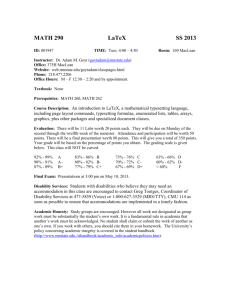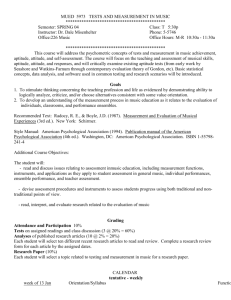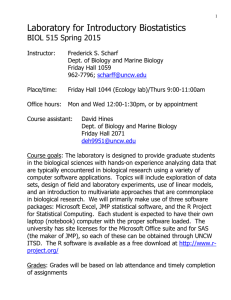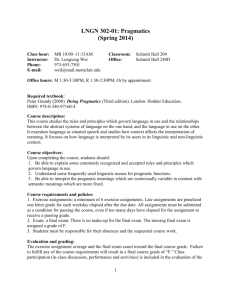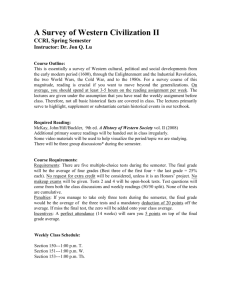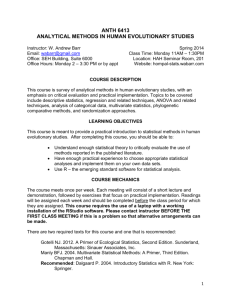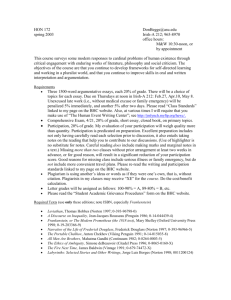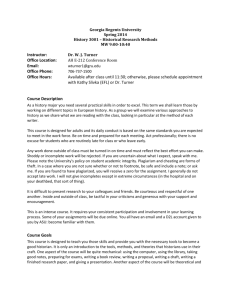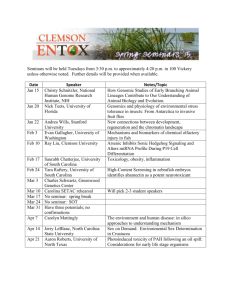past course syllabus
advertisement
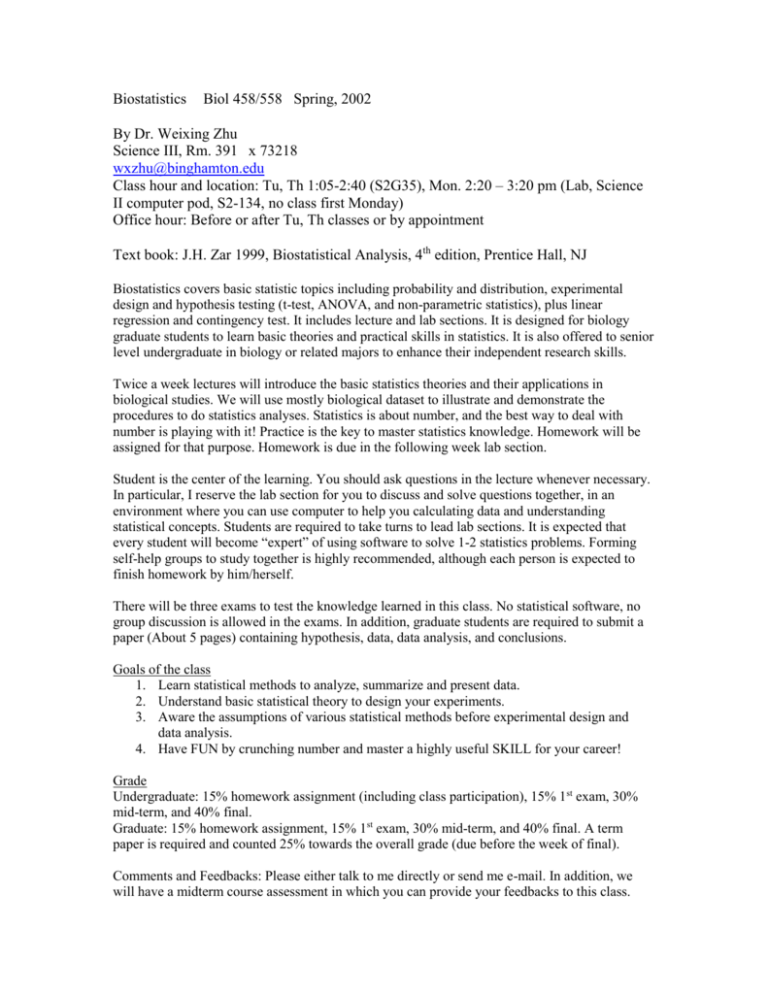
Biostatistics Biol 458/558 Spring, 2002 By Dr. Weixing Zhu Science III, Rm. 391 x 73218 wxzhu@binghamton.edu Class hour and location: Tu, Th 1:05-2:40 (S2G35), Mon. 2:20 – 3:20 pm (Lab, Science II computer pod, S2-134, no class first Monday) Office hour: Before or after Tu, Th classes or by appointment Text book: J.H. Zar 1999, Biostatistical Analysis, 4th edition, Prentice Hall, NJ Biostatistics covers basic statistic topics including probability and distribution, experimental design and hypothesis testing (t-test, ANOVA, and non-parametric statistics), plus linear regression and contingency test. It includes lecture and lab sections. It is designed for biology graduate students to learn basic theories and practical skills in statistics. It is also offered to senior level undergraduate in biology or related majors to enhance their independent research skills. Twice a week lectures will introduce the basic statistics theories and their applications in biological studies. We will use mostly biological dataset to illustrate and demonstrate the procedures to do statistics analyses. Statistics is about number, and the best way to deal with number is playing with it! Practice is the key to master statistics knowledge. Homework will be assigned for that purpose. Homework is due in the following week lab section. Student is the center of the learning. You should ask questions in the lecture whenever necessary. In particular, I reserve the lab section for you to discuss and solve questions together, in an environment where you can use computer to help you calculating data and understanding statistical concepts. Students are required to take turns to lead lab sections. It is expected that every student will become “expert” of using software to solve 1-2 statistics problems. Forming self-help groups to study together is highly recommended, although each person is expected to finish homework by him/herself. There will be three exams to test the knowledge learned in this class. No statistical software, no group discussion is allowed in the exams. In addition, graduate students are required to submit a paper (About 5 pages) containing hypothesis, data, data analysis, and conclusions. Goals of the class 1. Learn statistical methods to analyze, summarize and present data. 2. Understand basic statistical theory to design your experiments. 3. Aware the assumptions of various statistical methods before experimental design and data analysis. 4. Have FUN by crunching number and master a highly useful SKILL for your career! Grade Undergraduate: 15% homework assignment (including class participation), 15% 1st exam, 30% mid-term, and 40% final. Graduate: 15% homework assignment, 15% 1st exam, 30% mid-term, and 40% final. A term paper is required and counted 25% towards the overall grade (due before the week of final). Comments and Feedbacks: Please either talk to me directly or send me e-mail. In addition, we will have a midterm course assessment in which you can provide your feedbacks to this class. Course Schedule Date Content Reading Jan 29 Jan 31 *** Introduction; Introduce data distribution Population and samples; Introduce central tendency No lab class in the first week Ch. 1 Ch. 2, 3.1-3.3 Feb 5 Feb 7 *** Measure data dispersion and variability Introduce biodiversity index First computer lab 4.1-4.6 4.7 Feb 12 Feb 14 Introduce probability Introduce Normal Distribution 5.1-5.7 6.1-6.2 Feb 19 Feb 21 Continue normal distribution; Introduce statistical testing First exam 6.3-6.5 Feb 26 Feb 28 Introduce one-sample analysis Continue one-sample analysis 7.1-7.4 7.5-7.6, 7.14 Mar 5 Mar 7 Introduce two-sample analysis Continue two-sample analysis 8.1-8.4 8.5, 8.7 Mar 12 Mar 14 Nonparametric statistics Paired-sample analysis 8.9-8.10, 9.5 9.1-9.3 Mar 19 Mar 21 Introduce analysis of variance Continue one-way ANOVA 10.1-10.2 10.3, 10.6 Mar 23-Apr 1 Spring Break Apr 2 Apr 4 Nonparametric analysis of multiple groups Midterm exam (cover contents through Mar 21) 10.4 Apr 9 Apr 11 Multiple comparison Contrast analysis and confidence interval 11.1-11.2 11.3, 11.5 Apr 16 Apr 20 Two-way analysis of variance Multiple comparisons 12.1-12.2 12.6 Apr 23 Apr 25 Randomized block experimental design Data transformation 12.4 13.1-13.3 *** Apr 30 Topic outline for term paper due (for graduate students only) Introduce linear regression 17.1-17.2 May 2 Continue linear regression 17.3-4, 19.10 May 7 May 9 Introduce linear correlation Rank correlation 19.1-19.2 19.9 Final exam


